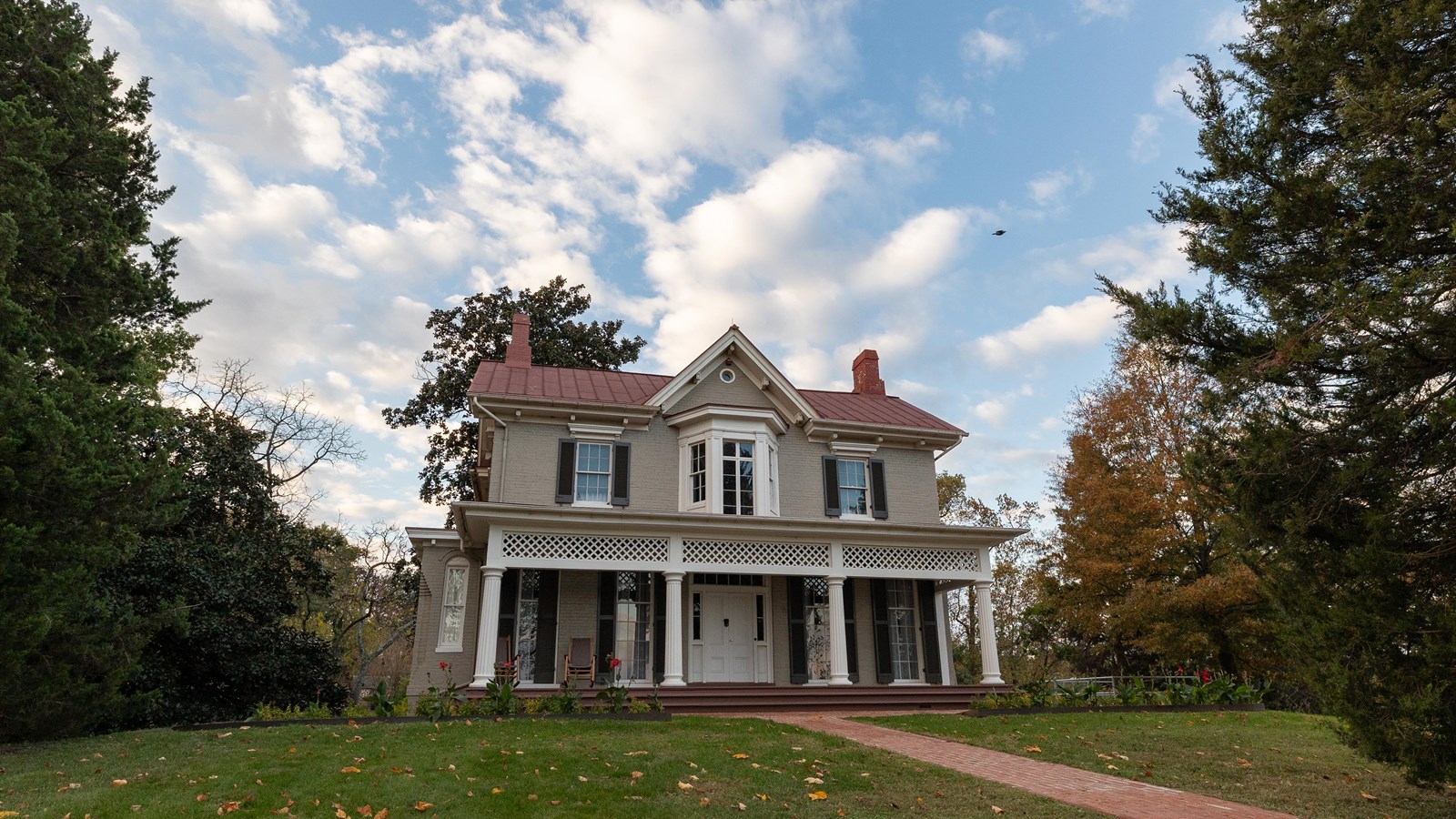Last updated: March 6, 2025
Place
Frederick Douglass National Historic Site

NPS / Kelsey Graczyk
Gifts/Souvenirs/Books, Historical/Interpretive Information/Exhibits, Information - Ranger/Staff Member Present, Information Kiosk/Bulletin Board, Parking - Auto, Public Transit, Restroom, Scenic View/Photo Spot, Theater/Auditorium, Wheelchair Accessible
The Frederick Douglass National Historic Site preserves and interprets Cedar Hill, where Frederick Douglass lived from 1877 until his death in 1895.
The centerpiece of the site is the historic house, which sits on top of a 50-foot hill and eight acres of the original estate. Restored to its 1895 appearance, the house is furnished with original objects that belonged to Frederick Douglass and other household members.
A typical visit lasts about 1.5 hours. Things to do include touring the historic house, looking at exhibits, watching the film, and exploring the grounds.
You must be on a guided tour to get inside the historic house. Because space is limited, reservations are strongly encouraged, even if you are visiting on your own. If you are visiting with a group of more than ten, reservations are required.
About Frederick Douglass
Frederick Douglass was an early supporter of blacks’ and women’s rights, a social reformer, and is referred to as the "Father" of the Civil Rights Movement. Douglass was born in February 1818 on Maryland’s Eastern Shore, the son of an enslaved mother and a white father. As a child, he worked in the fields, was moved from one family to another and was hired out to shipbuilders in Baltimore. Through these years he learned to read and write, met free blacks – learning that it was possible to be African American and be free – joined the Bethel A.M.E. Church in Baltimore, and began to engage in debates. After several failed attempts to escape to the North, he succeeded in 1838, settling in New Bedford, Massachusetts, with his new wife Anna. Within the next few years, Douglass championed the right of African Americans to fight in the Union Army and in May 1863, saw two of his sons leave with the Massachusetts 54th Regiments for South Carolina. After the Civil War, he worked unceasingly for full civil rights for African Americans.
Douglass purchased his estate, Cedar Hill, in 1877. He was appointed US Minister and Counsel General to Haiti by President Benjamin Harrison, resigned the post in 1893, and returned to Cedar Hill where he died February 20, 1895.The site has a visitor center with exhibits. Contact the park for tours of the home.
